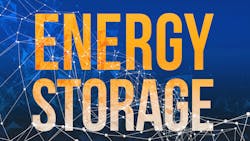Power Density in Hybrid Energy Storage Systems (Download)
Fossil fuels, along with worries about protecting our fragile environment, are strongly driving efforts toward renewable-energy solutions like wind and solar energy. The problem is that these systems are unpredictable and intermittent, which will lead to the inability of meeting load demands of business industries and domestic customers.
We’re currently seeing a marked increase in penetration of renewable-energy sources, such as solar energy and wind, into the power grid. However, electrical energy storage (EES) systems also are receiving a great deal of attention by researchers. Some of these EES systems include adiabatic compressed air energy storage (A-CAES) and pumped thermal energy storage (PTES) systems, as well as power energy storage for weak power distribution grids with high-density distributed generation integration.
